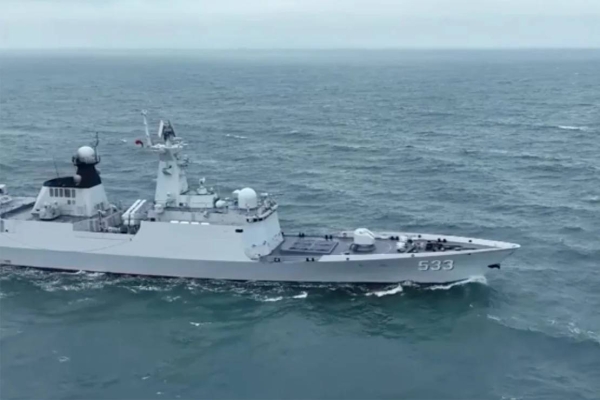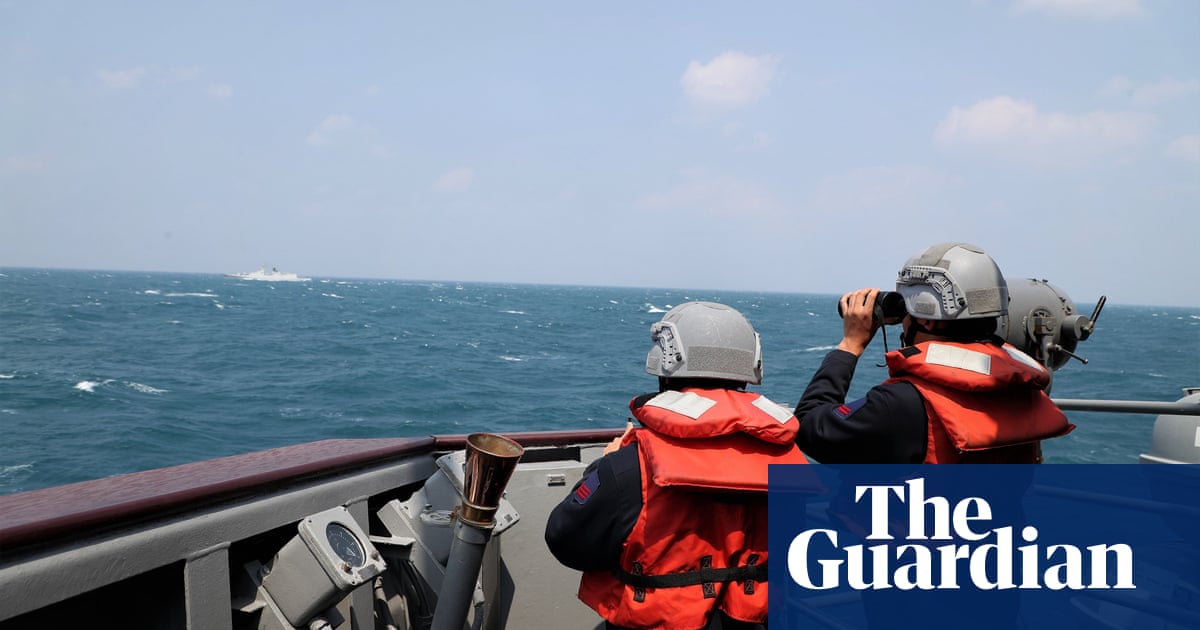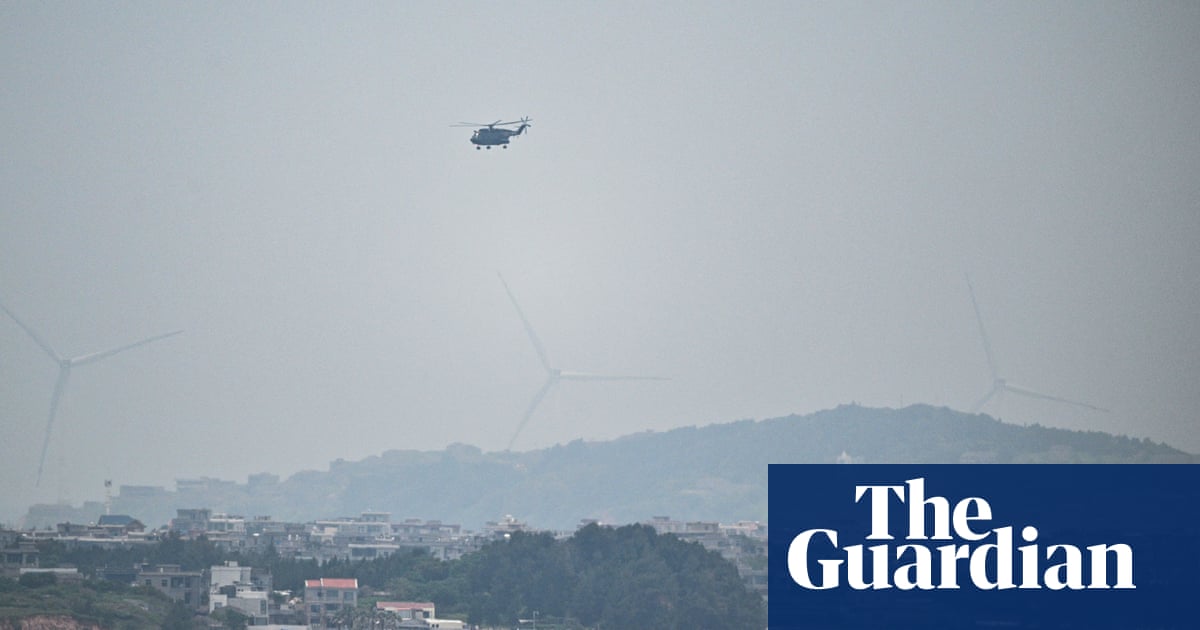
China has wrapped up its unprecedented four days of drills that showcased Beijing’s growing military prowess and determination to challenge what it called “any attempt to separate Taiwan from China”, after the controversial visit to the island democracy last week by the US House speaker, Nancy Pelosi.
A Chinese state television commentator said the Chinese military would now conduct “regular” drills on the Taiwan side of the line, saying the “historic task” of China’s “reunification” could be realised.
The series of drills, which began on Thursday, were carried out in response to a rare visit by the US House Speaker, Nancy Pelosi. Beijing regards Taiwan as a part of China’s own territory and it responded with test launches of ballistic missiles over Taiwan’s capital city, Taipei, for the first time.
China also halted some ties with the US, including cancelling a number of efforts to keep communication channels open between military commanders and suspending bilateral collaborations on the climate crisis.
Chinese and Taiwanese warships shadowed each other on Sunday in the hours before the scheduled end of the military exercises. The People’s Liberation Army said its drills focused on testing China’s long-range air and ground strikes.
Taiwan responded to Beijing with its own show of defiance. Its official news outlet, Central News Agency, reported that its army would conduct live-fire artillery drills in the southern Pingtung county on Tuesday and Thursday. In the last few days, Taipei’s diplomats have also condemned Beijing’s actions in front of international media.
About 10 warships each from China and Taiwan sailed at close quarters in the Taiwan strait on Sunday, with some Chinese vessels crossing the median line, an unofficial buffer separating the two sides, Reuters reported, citing a person with knowledge of the matter.
Taiwan’s defence ministry said it had detected 66 Chinese air force planes and 14 Chinese warships conducting activities in and around the Taiwan strait on Sunday.
While Chinese forces “pressed” the line, as they had on Saturday, the Taiwan side stayed close to monitor and, where possible, deny the Chinese the ability to cross.
“The two sides are showing restraint,” the person said, describing the manoeuvres as “cat and mouse”. The person continued: “One side tries to cross, and the other stands in the way and forces them to a more disadvantaged position and eventually return to the other side.”
Advertisement
Taiwan said its shore-based anti-ship missiles and Patriot surface-to-air-missiles were on standby.
The Chinese exercises, centred on six zones around the island, began on Thursday and were scheduled to last until midday on Sunday. China’s military said on Saturday it was conducting sea and air joint exercises north, south-west and east of Taiwan, with a focus on testing land-strike and sea-assault capabilities.
Lonnie D. Henley, a retired US intelligence officer and an adjunct professor at George Washington University’s Elliot School of International Affairs in Washington DC, said while the operational activities the Chinese military is undertaking are routine features of their annual training cycle, the drills emphasised the PLA’s increasing ability to attack Taiwan.
“This is not at all to downplay the advances the PLA has made over the past several decades,” Henley said. “In a war fought close to the Chinese coast, the PLA could inflict serious harm on any opponent including the United States, and depending on the specific circumstances, might be able to prevail against Taiwan despite full US military intervention.”
But he also noted that in other areas, particularly the ability to fight a more distant war, “China lags far behind the US, and it remains to be seen whether they will pursue that capability in the future.”
Responding to the PLA’s exercises, a White House spokesperson said: “These activities are a significant escalation in China’s efforts to change the status quo. They are provocative, irresponsible and raise the risk of miscalculation.
“They are also at odds with our longstanding goal of maintaining peace and stability across the Taiwan strait, which is what the world expects.”
On Friday, China halted communication through various channels with the US as part of its response to Pelosi’s visit, including between military theatre commands and on climate change.
The US secretary of state, Antony Blinken, accused China of taking “irresponsible” steps and moving away from prioritising peaceful resolution towards the use of force.
Taiwan’s military said on Saturday that the Chinese ships and planes taking part in the drills were conducting a simulated attack on the island, which China claims as its territory.
Taiwan’s defence ministry later said its forces had scrambled jets to warn away 20 Chinese aircraft, including 14 that crossed the median line. It also detected 14 Chinese ships conducting activity around the Taiwan strait.
Advertisement
Pelosi, a longtime critic of China and a political ally of the US president, Joe Biden, arrived in Taiwan late on Tuesday on the highest-level visit to the island by an American official in a quarter of a century, despite Chinese warnings. She said her visit showed unwavering US commitment to supporting Taiwan’s democracy.
“The world faces a choice between autocracy and democracy,” she said. She also stressed that her trip was “not about changing the status quo in Taiwan or the region”.
Taiwan has been self-ruled since 1949, when Mao Zedong’s Chinese Communist party took power in Beijing after defeating Chiang Kai-shek’s Kuomintang nationalists in a civil war, prompting their retreat to the island.
China says its relations with Taiwan are an “internal matter” and it reserves the right to bring the island under its control, by force if necessary. Taiwan rejects China’s claims, saying only Taiwan’s people can decide their future.
China’s foreign minister, Wang Yi, said Blinken was spreading “misinformation”, adding: “We wish to issue a warning to the United States: do not act rashly; do not create a greater crisis.”
China has not mentioned a suspension of military talks at the most senior levels, such as with the US defence secretary, Lloyd Austin, and the chairman of the joint chiefs of staff, Gen Mark Milley. While those talks have been infrequent, officials have said they are important in the case of an emergency.
The Chinese state media’s campaign against Pelosi has continued, with the messaging in the past few days focused on justifying the legitimacy of China’s “countermeasures”. Beijing has been telling its citizens that more than 160 countries had “reiterated their support of the ‘one-China principle’” since Pelosi’s visit.
The fallout from Pelosi’s trip last week unnerved many countries in the region. On Saturday, Singapore’s coordinating minister for national security, Teo Chee Hean, said in a Facebook post that tensions between the US and China over Taiwan were “an issue that can lead to conflict and war to the detriment of all parties involved, especially the people in Taiwan”.












